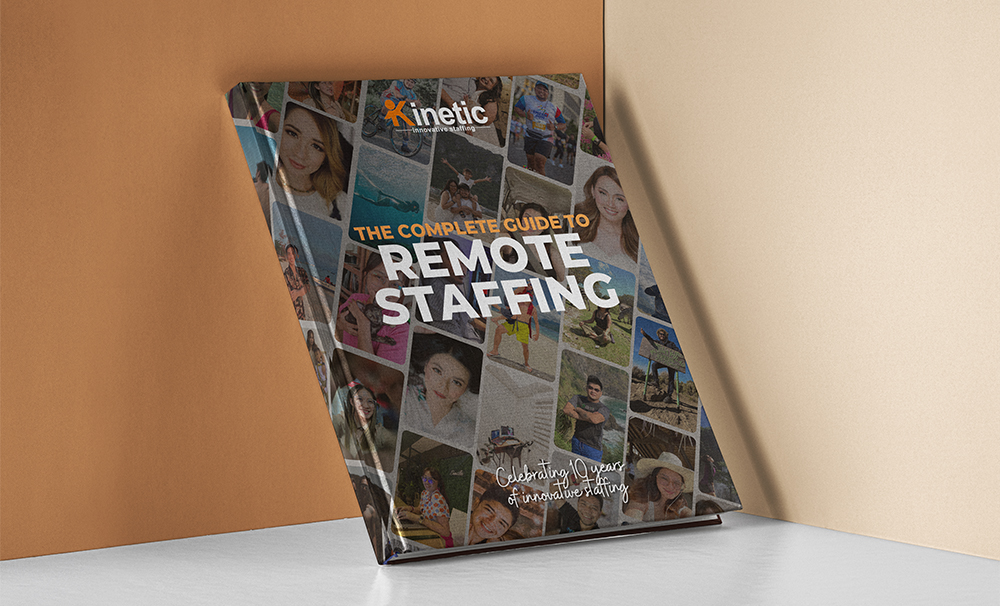When you dreamt up your business, you were probably thinking of yourself as the head of an enterprise, with an army of staff to help you change the world.But no—waking up at 4 AM, making your coffee, loading boxes into your car, while worrying about bills and invoices—is not your idea of “entrepreneurship.”
You knew it wasn’t going to be easy. You just didn’t expect it to be this hard.
CEOs of big companies, on the other hand, have people doing things for them. More specifically, they have Project Managers—God-send angels who get the job done. So while delegating the details to their abled deputies, these lucky bigwigs get to ruminate on “big picture.”
How about you?
Well, you are your project manager—heroically hands-on about every little thing. You do have a staff, but it seems like you still have too much on your plate.
And, as if life wasn’t comic enough, COVID-19 happened.
For many of us, this is the new normal:
Today I feel #thankful for the flexibility I have in my #WorkFromHome office. I can do anything in this space – from webinars and virtual meetings to reviewing product plans. Happy #DigitalWorkplaceDay to all! #wfhlife #remotework #AccountingSeed pic.twitter.com/PodwnKSkVO
— Tony Zorc (@tonyzorc) October 6, 2020
In the twinkling of an eye, the customer base that took years to nurture scurried back to their holes, and the profits that were slowly coming in, suddenly, were not.
Now, you can’t even come to your place of business with confidence, and the same goes for both employees and customers.
You’re relegated to doing everything online—videoconferencing and telecommuting—as a business continuity strategy. Unfortunately, you’re not that good with tech. Or, but even if you are, the feel of digital’s not just the same as being able to do MBWA or “management by walking around.”
So in this post, we’re going to help you with how COVID-19 has affected your company, and we’ve identified four mission-critical tasks, (4 “Ms”), that if executed properly, will help you flourish in this age of the “new normal.”
What Do You Do When Your Physical World Becomes Digitised?
Working from home, having a distributed workforce—are not new developments. They’ve been afoot a couple of years.
Telecommuting was already on the rise before COVID, and things were going digital anyway. Remote was previously touted as the future of work. COVID-19 has merely accelerated and intensified these workplace innovations. So whether you like it or not, sooner or later, you’re going to have to run your business in your pyjamas… and whatnot.
So here are four digital skills you need working as your project manager:
Master digital communications
A digital pivot requires an extra layer of communication skills that are technical in nature. For example, Zoom and Skype are rapidly becoming necessary skills for business leaders.
(Here’s a starter to help you get the most of Zoom.)
Leading a team means navigating interfaces, sharing a screen, and knowing a bunch of keyboard shortcuts and tricks that make for productive meetings. It’s the equivalent of knowing how to use the fax machine or email two decades ago.
Virtual meetings have their own unique set of challenges.
Ever had the experience of awkward silences, where everybody pauses, and nobody knows whose turn it is to speak? This is then followed by everybody talking at the same time… and then leading to that awkward silence once again.
That would be the digital equivalent of the left-right hallway tango two people heading in opposite directions engage in. You both go this way, and you both go that way. (And before long, you’re spending more face time with this person than your parents.)
So here are some of the best practices to minimise those tango dances in your meetings:
- Do not assume that a short pause means the speaker has done talking. Allow longer pauses and give room for audio and video lag. (You’re really going to have to be more comfortable with longer moments of silences.)
- Put structure to the meeting and establish ground rules. You might consider giving a speaker a block of time to speak without interruptions, with the questions allowed at the end.
- Assign a facilitator to run things and tell people when it’s their chance to talk.
- As the leader, you might want to take the onus and simply continue talking when overlapping speeches occur.
- When you’re doing things like opening up a file or trying to share your screen, don’t forget to narrate what you’re doing so participants are apprised of what’s happening. So you might say, “Let me just pull the file and share my screen…hold on.”
- Signal intended interruptions by raising your hand and waiting to be recognised by the person. Or use the chat feature to announce your intentions.
- If you’re doing only audio, don’t forget to identify yourself in the beginning, so others know who is talking.
Manage data
It used to be that “managing” data meant keeping it solely for yourself—putting valuable information locked in a vault.
Today, managing data means ensuring that you share as much as you can to as many in your team. This is not saying that you take data for granted or handle it willy-nilly. It means that if you have any information or insight that can help your team work better, by gosh, share it!
The growth and success of your business depend on correct and timely decisions made in the different levels and sectors that make up your business.
It’s not just your decisions that matter. The decisions of the people around you do too. (And these decisions affect you the most.)
By sharing data, you empower your people to make better decisions. You make them more effective and more efficient in their jobs. As their employer, I know you’d want that.
So if there’s a file, an article, or a piece of information that somebody from your team just might benefit, a simple tap or click of a button can go a long way.
Build a culture of collaboration in your enterprise and see your business snowball into success.
Monitor performance
Before work-from-home (WFH) or remote work, you can literally look over someone’s shoulder and see how they’re doing. You can literally walk around and check on deliverables. This takes on a new meaning in a set-up where your workforce is distributed over great distances, maybe even across national boundaries.
Thankfully, there are plenty of tools to help you with this.
Depending on the nature of the business, you can monitor things like:
- actual work time
- call volume
- sales or revenue generated/employee
- productivity
- conversion rate etc.
You can dashboard these metrics into bright visuals. In a digitised work environment, you can monitor everything. Tech companies help you answer the question: What are my guys doing?
It gives small business owners the peace of mind and the confidence that they’re not just paying guys on the other side of the world to lounge on company time.
But before you make people download a software or app that tracks their movement from their kitchen table to the bathroom, it might be useful to review something that goes beyond all those key performance indicators (KPIs).
It’s called Motivation.
Motivate your team
The ability to get people fired up is one of the top characteristics of a great Project Manager—of a leader.
It doesn’t matter if your team isn’t able to meet face-to-face. If a shared goal inspires your people, they will be working hard even if no eyeballs are trained on them.
Of the four M’s here, I think this is the most important value that needs to be developed by any project manager. It doesn’t matter if you master digital communications if you’re communicating the wrong things. You can flood your team with data, but without inspiration, they will just be reams of unused insights. On the other hand, if you motivate people, you don’t even really need to monitor them.
A motivated team can do feats of innovation and creativity. People can blow your expectations out of the water.
Motivating a team requires a whole new article that we might do in a future post, but suffice it to say, that this one of the most important ways to win the future.
So that’s all fine, but…
What if you just don’t have the time to do these things yourself?
The 4 Ms are going to be crucial as things transition to a more remote and digitised set-up.
But, what if, as a small business owner, you just don’t have the time and skills to be your own project manager? Is there something else for you?
That’s where Kinetic comes in!
Before we close this post, let me briefly tell you something about Kinetic Innovative Staffing.
As a leading remote staffing outfit, Kinetic can supply your company with vetted and experienced project managers who can run point. These are trustworthy deputies who oversee day-to-day projects and tasks, manage your team virtually, and directly report to you. This is so you can focus on the other critical aspects of running your enterprise: providing vision and overall leadership.
“But, can I afford something like that? I mean, we are not a big company.”
Not only can you afford to hire project managers, but by doing so, you are saving yourself as much as 70% in employee salaries.
By using a strategy called “remote staffing,” you are getting the best of both worlds. Remote staffing is leveraging the blessings of technology to hire top international talent at much lower costs. These are bright and driven individuals from other countries who can get the job done on time and under budget.
Remote staffing is a more potent business strategy than “outsourcing” and “offshoring,” and if you get in touch with us, we can tell you more about it. (No strings attached.)
Here’s to your business’ success!
Kinetic Innovative Staffing has been providing hundreds of companies in the Asia Pacific, North America, and Europe with professionals working remotely from the Philippines since 2013. Get in touch to know more.




